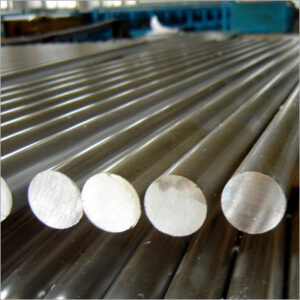Advancing Technology: Tool Steel‘s Role in Electronics Manufacturing
 The sleek phones, tablets, and televisions defining modern life depend on incredible manufacturing precision. Shaping these electronics demands tool steels that can machine, mold, and fabricate the razor-thin components to micron accuracies. Without specialized tool steel equipment, many of our favorite devices would never progress beyond conceptual sketches.
The sleek phones, tablets, and televisions defining modern life depend on incredible manufacturing precision. Shaping these electronics demands tool steels that can machine, mold, and fabricate the razor-thin components to micron accuracies. Without specialized tool steel equipment, many of our favorite devices would never progress beyond conceptual sketches.
In this article, we’ll explore the indispensable role of tool steels enabling today’s electronics manufacturing marvels. Discover how alloy innovations and traditional tool steel properties come together to craft intricate molds, durable process equipment, and advanced fabrication techniques that shape the tech future. Wherever electronics push boundaries, tool steels will be there making it possible.
An Introduction to Electronics Tool Steels
Tool steels refer to the family of specialty carbon and alloy steels engineered for machining, molding, pressing, and fabrication processes. Key traits make them invaluable for electronics:
- Extreme hardness while maintaining fracture toughness
- Excellent wear resistance across millions of high-speed cycles
- Strength to withstand cutting, molding, and forming forces
- Dimensional precision and stability during thermal fluctuations
- Ductility for wire drawing processes
- Corrosion resistance in caustic etching chemicals
These attributes allow fabricating the tiny, intricate, and robust components that enable today’s electronic wonders. Tool steels hold the key to translating innovative designs into tangible products.
Molding Precision Plastics
Many electronic enclosures, frames, and components start as tool steel molds shaping plastic to exacting tolerances. Properties like:
- Polishability to form mirror-smooth mold surfaces
- Consistent cooling across the mold to avoid warping
- Resistance to deformation from injection pressures
- Temperature stability to hold precision across cycles
- Corrosion resistance to injection process chemicals
Enable molding intricately detailed housings with micro-fine textures and decorative finishes. Without these molds possible only through tool steel, devices would lack the ergonomic shapes and tactile feel that consumers expect.
Stamping and Forming Metals
Metal alloy enclosures and frames also depend on tool steel fabrication. Stamping presses and dies utilize alloys like D2 steel to shear and form tough metals including:
- Stainless steel for strength, RF shielding, and corrosion resistance
- Aluminum for light weight and thermal dissipation
- Copper alloys for electrical conductivity
- Titanium for durability and aesthetics
- Exotic alloys like invar that resist thermal expansion
Durable tool steel stamping dies withstand millions of cycles punching, bending, and drawing parts from sheet metal. This high speed process shapes everything from thin bezels to formed backplates and rigid internal chassis components.
Machining Material Extremes
Electronic components demand machining both extremely fragile and extremely hard materials to tight tolerances. Tool steel cutting tools uniquely meet these challenges:
Brittle Wafers
Diamond-coated silicon wafer saws divide silicon ingots into microprocessors and memory chips just molecules thick. The tool steel bodies maximize rigidity during slow, precise slicing.
Exotic Alloys
Machining tungsten pins, cobalt interconnects, and titanium contacts requires tool steels that retain sharpness against such hard, abrasive alloys under high pressures and speeds.
Ceramics
Machining insulative ceramics into sensors and capacitors utilizes wear-resistant tool steel cutters with keen edges to shear the brittle material cleanly. Limited cutting force prevents cracking.
From the delicate to the robust, tool steels machine the array of electronic materials with control and efficiency.
Etching Details and Finishes
Achieving today’s sleek designs involves etching and finishing to perfect aesthetic touches:
Chemical Etching
Immersing devices into acidic, caustic baths etches microscopic textures and reveals grain patterns across metal surfaces. Durable tool steel vessels withstand the corrosive chemicals at precise temperatures.
Anodizing
Energized acidic electrolytes convert aluminum and magnesium alloys into rugged, colored oxide layers for scratch protection and visual appeal. Large tool steel anodizing tanks facilitate uniform coatings.
Electropolishing
Removing microscopic peaks through anodic dissolution in electrolytic baths refines surface finish for increased brightness and lubricity. Tool steels withstand the bath conditions while providing electrical contacts.
These subtle surface enhancements depend on specialized tool steel equipment central to modern aesthetics and ergonomics.
Enabling Production Lines
 Electronics manufacturing depends on tool steel conveyors, robotics, and handling equipment that precisely manipulate delicate components through high-speed production without damage or contamination:
Electronics manufacturing depends on tool steel conveyors, robotics, and handling equipment that precisely manipulate delicate components through high-speed production without damage or contamination:
- Corrosion resistant stainless steel conveyors maintain cleanliness transferring PCBs through SMT lines.
- Grip tools made from durable tool steel alloys securely hold devices without marring or scratching during automated assembly. The hardness resists wearing against metal chassis.
- Robot arms repeatedly rotate, lower, and retrieve heavy casts and molds from ovens with precision and speed only possible using hardened tool steel joints, gears, and drivetrains.
Tool steel equipment forms the backbone of automated electronic production lines, protecting quality and efficiency.
Durable Drawn Wire
Thin copper and aluminum wiring at the core of all electronics depends on drawing dies made of tool steels that combine strength, hardness, and fracture toughness. Diamond drawing dies consistently reduce wire gauges passing hundreds of meters per minute through the tool steel dies. Maintaining roundness and surface finish requires wear and corrosion resistant materials able to withstand millions of linear feet drawn over years. Only tool steels balance the needed properties.
Future Innovations
Electronics constantly evolve. As engineers dream up new devices and capabilities, tool steels will remain instrumental transforming designs into manufacturable products:
- Smaller features demand micro-machining, etching, molding, and stamping on an even finer scale.
- Faster processing and wireless speeds rely on exotic new materials needing specially tailored tooling solutions during fabrication.
- Durable transparent displays and casings require new mold and stamping technologies to shape scratch-resistant glass, ceramics, and optical polymers.
- Embedding sensors and interconnects directly into surfaces involves innovativetooling techniques to dispense, bond, and position the components.
Wherever electronics advance, specialty tool steels will be along for the ride enabling manufacturing innovations that bring new ideas to life.
Key Takeaways on Electronics Tool Steels
Tool steels drive many manufacturing breakthroughs across electronics:
- Molding tiny plastic components to micro accuracies through polished, durable tool steel molds.
- Stamping and forming tough, thin metal alloy enclosures via millions of tool steel die strikes.
- Machining brittle silicon and abrasive exotic alloys into precision parts only possible with tailored tooling.
- Etching, finishing, and coating to exacting aesthetic specifications thanks to tool steel equipment.
- Protecting fragile components along automated production lines via durable tool steel handling equipment.
- Drawing miles of microscopic wires repeatedly through wear-resistant tool steel dies.
By making the extreme manufacturing possible, tool steels empower revolutionary electronic advances that transform how we live, work, and connect.
FAQ
How are tool steels used in plastic electronic component manufacturing?
Tool steel injection molds repeatedly form high precision plastic parts like housings, cases, and small components. The molds maintain mirror smoothness, thermal stability, wear and corrosion resistance across millions of cycles to hold tight tolerances.
What role do tool steels play in metal electronics fabrication?
Punching, bending, drawing, and blanking dies made of durable tool steel alloys stamp sheet metal into enclosures, frames, shields, and internal components. Tool steels withstand millions of strikes when forming stainless steel, aluminum, and other structural alloys.
Why are tool steels essential for machining electronic materials?
Machining tool steels tailored for hard, brittle materials maintain sharp cutting edges and precise form. This allows machining silicon wafers only microns thick or abrasive, difficult-to-cut alloys into delicate pins, contacts, and electrodes.
How do tool steels enable etching and finishing electronic device surfaces?
Corrosion-resistant tool steel vessels withstand caustic acids and baths needed for etching decorative textures and finishes into electronics. Tool steels also serve as durable anodes and cathodes during electroplating and anodizing processes essential for surface treatments.
Where are tool steels important in electronic component fabrication processes?
Tool steels construct durable equipment like conveyors, robotic arms, and handling tools that manipulate fragile components through fully automated manufacturing without scratching or contaminating surfaces. This protects quality.

